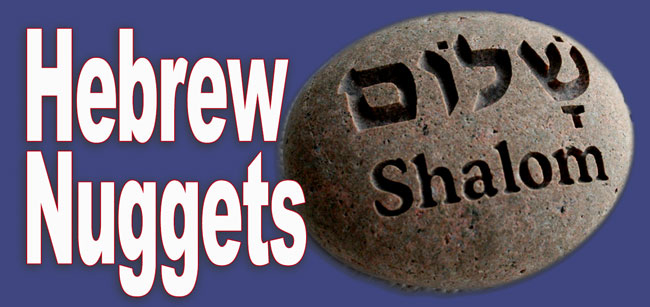Hebrew Nuggets is an article series that introduces beginners to Hebrew letters, Hebrew vocabulary and spiritual insights from the Hebrew tradition.
Revised: 2-Oct.-2015
 We have already introduced the sin. We mentioned it in Lesson 3 when we learned the שׁ (shin), the “sh” sound. The only difference between a shin and a sin is the placement of a tiny dot. When this dot is at the upper right-hand corner of the letter (שׁ), one knows that it is a shin and should be pronounced “sh.” When the dot is at the upper left-hand corner of the letter (שׂ), one knows that the letter is a sin and should be pronounced with an “s” sound. In unpointed Hebrew texts there are no vowel signs or shin/sin dots. In that case, one pronounces each ש either “sh” or “s” depending on the context in which it appears.
We have already introduced the sin. We mentioned it in Lesson 3 when we learned the שׁ (shin), the “sh” sound. The only difference between a shin and a sin is the placement of a tiny dot. When this dot is at the upper right-hand corner of the letter (שׁ), one knows that it is a shin and should be pronounced “sh.” When the dot is at the upper left-hand corner of the letter (שׂ), one knows that the letter is a sin and should be pronounced with an “s” sound. In unpointed Hebrew texts there are no vowel signs or shin/sin dots. In that case, one pronounces each ש either “sh” or “s” depending on the context in which it appears.
Paid Content
Premium Members and Friends of JP must be logged in to access this content: Login
If you do not have a paid subscription, please consider registering as a Premium Member starting at $10/month (paid monthly) or only $5/month (paid annually): Register
One Time Purchase Rather Than Membership
Rather than purchasing a membership subscription, you may purchase access to this single page for $1.99 USD. To purchase access we strongly encourage users to first register for a free account with JP (Register), which will make the process of accessing your purchase much simpler. Once you have registered you may login and purchase access to this page at this link:
































































































